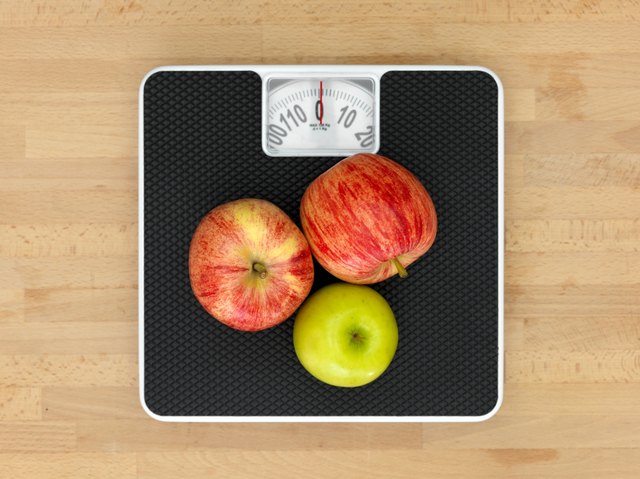
If you want to lose weight, you need to combine diet and exercise. Combining both of these strategies can result in substantial weight loss. A person who is 154lbs would need 1 hour of moderate intensity exercise. That means that by skipping a venti Green Tea Frappuccino at Starbucks, he or she could save 520 calories. You can lose weight by eating a balanced diet that includes whole foods and minimally processed foods. These foods are high in fiber, protein, as well as healthy fats.
Combining exercise and diet can improve your health in many ways. Healthy eating habits and regular exercise will improve your energy level, leading to lower blood sugar levels and less insulin resistance. In addition to keeping your weight down, exercise will also help improve your flexibility, balance, and cardio vascular health. If these two strategies are combined, you will feel better and live longer. There are many health benefits to exercise and diet. These factors will help you get there.

A combination of exercise and diet can work, but combining them will require commitment. It is important to make the effort to follow the instructions and stick to your routine. For weight loss, aim to maintain a calorie deficit between 1 and 2 pounds per week. Also, be consistent and do not go overboard with your workouts. It is better to achieve these goals first. This will ensure that you make the right decisions.
It is possible to lose weight by combining exercise and diet. This doesn't mean you shouldn't eat right. Healthy eating is key. Running may be an option, but eating high-fat, high sugar treats is better. For losing weight and reaching your ideal body, a healthy diet is crucial. Try to exercise at least 20 minutes per day and to drink six to eight glasses each of water.
According to a study, exercise and diet led to equal weight loss. The results of exercise and diet were generally the same. Long-term, exercise was the best option, since it is the key to successful weight loss. However, you should still consider all factors. Numerous studies show that these methods do not have to be mutually exclusive. It is crucial to strike a balance between exercise and diet.

It is essential to understand how diet and exercise interact in order to achieve optimal performance. It regulates energy and supplies the necessary fuel for exercise. Some foods provide an energy boost while other foods cause a decrease in performance. Some foods should be avoided while exercising because they can increase the risk of heartburn and indigestion. They can also interfere with your sleep quality. It is important that you eat healthy foods with plenty of vegetables and fruits.
FAQ
What is the difference in a virus and bacteria?
A virus is a microscopic organism that cannot reproduce outside its host cell. A bacterium is an organism that splits itself in two. Viruses measure only 20 nanometers in diameter, but bacteria is up to 1 millimeter in size.
Viruses are often spread through contact of infected bodily fluids like saliva, urine or semen. Bacteria is usually spread directly from surfaces or objects contaminated with bacteria.
Viruses can get into our bodies through cuts and scrapes on the skin, bites, and other injuries. They may also enter through the nose, mouth, eyes, ears, vagina, rectum , or anus.
Bacteria can be introduced to our bodies by cuts, scrapes or burns. They may also come into our bodies through food, water, air, soil, dust, or animals.
Both bacteria as well as viruses can cause illness. But viruses can't multiply within their hosts. They can only infect living cells and cause illness.
Bacteria can grow in their hosts and cause disease. They can also invade other parts of your body. That's why we need antibiotics to kill them.
What causes weight loss as we age?
How can you find out if your weight has changed?
A person who has less body fat than their muscle mass will experience weight loss. This means that daily calories should be less than daily energy. The most common cause of weight loss is decreased activity levels. Other reasons include poor eating habits, stress, hormone imbalances, certain medications and illness. Weight gain is when there are more calories than muscle mass. It occurs when people consume more calories each day than they use. Common reasons include overeating, increased physical activity, and hormonal changes.
The main reason why our bodies lose weight is because we consume fewer calories than we burn. The main reason we lose weight is because we exercise more often. This increases our metabolism rate and burns more calories each day. But, this does not mean that we will be thinner. It is important to know if we are losing weight or gaining muscle. We will lose weight if we burn more calories than we consume. But if we're consuming more calories than we're burning, then we're actually storing them as fat.
As we age, we become less agile and don't move as often. We also tend to consume less food than when we were younger. Therefore, we tend to put on weight. We also tend to look larger because we have more muscle.
It's not possible to measure how much weight your body has lost without weighing yourself every week. There are many options for measuring your weight. You can also measure your waist, hips or thighs. Some people prefer using bathroom scales and others prefer tape measure.
To track your progress, weigh yourself once a week. Measure your waistline once per month. To track your progress, you can also take photos every few months of yourself to see how far it has come.
Online, you can find out your height and weight. You'd likely weigh 180 pounds if you were 5'10 tall and 180 pounds if you were 180lbs.
What is the problem?
BMI stands for Body Mass Index, which is a measurement of body fat based on height and weight. BMI is calculated using the following formula:
Weight in kilograms divided with height in meters.
The result is expressed as a number from 0 to 25. A score of 18.5 or higher indicates overweight, while a score of 23 or higher indicates obesity.
A person who is 100 kg in weight and 1.75m in height will have a 22 BMI.
Statistics
- This article received 11 testimonials and 86% of readers who voted found it helpful, earning it our reader-approved status. (wikihow.com)
- According to the Physical Activity Guidelines for Americans, we should strive for at least 150 minutes of moderate intensity activity each week (54Trusted Source Smoking, harmful use of drugs, and alcohol abuse can all seriously negatively affect your health. (healthline.com)
- WHO recommends consuming less than 5% of total energy intake for additional health benefits. (who.int)
- The Dietary Guidelines for Americans recommend keeping added sugar intake below 10% of your daily calorie intake, while the World Health Organization recommends slashing added sugars to 5% or less of your daily calories for optimal health (59Trusted (healthline.com)
External Links
How To
What does the "vitamins” word mean?
Vitamins are organic substances found naturally in food. Vitamins help us absorb nutrients from foods we eat. Vitamins are not made by the body, so they must be obtained through food.
Two types of vitamins exist: water-soluble vitamin and fat-soluble vitamin. Water-soluble vitamins dissolve easily when they are dissolved in water. Examples include vitamin C,B1 (thiamine), B2 (riboflavin), B3 (niacin), B6 (pyridoxine), folic acid, biotin, pantothenic acid, and choline. Fat-soluble vitamins can be stored in the liver or in fatty tissue. These include vitamin D, E and K, as well as beta carotene.
Vitamins are classified based on their biological activity. There are eight major vitamin groups:
-
A - vital for healthy growth.
-
C is important for nerve function and energy production.
-
D – Essential for healthy teeth, bones and joints
-
E is needed for good reproduction and vision.
-
K - Required for healthy nerves and muscles.
-
P - Essential for strong bones and teeth.
-
Q - aids digestion and absorption of iron.
-
R - Red blood cells are made from red blood cells.
The recommended daily allowance (RDA), for vitamins, varies depending upon age, gender, or physical condition. The U.S. Food and Drug Administration sets RDA values.
For adults over 19 years, the RDA is 400 mg per day for vitamin A. For fetal development, pregnant women need 600 mg per day. Children ages 1-8 require 900 micrograms per day. Babies under one-year old require 700 mg per day. Between 9 and 12 years of age, however, this drops to 500 mg per day.
Children between the ages of 1-18 need 800 micrograms per daily for obesity, while children overweight require 1000 micrograms. Children underweight or obese will need 1200 mg per day.
Children ages 4-8 years who have been diagnosed with anemia need 2200 micrograms per day of vitamin C.
2000 micrograms is the minimum daily intake for adults over 50 years old to maintain good health. Mothers who are pregnant, nursing, or have a high nutrient need will require 3000 micrograms a day.
1500 micrograms are required daily by adults over 70 because they lose approximately 10% of their muscle each decade.
Women who are pregnant, nursing or breastfeeding need more than the RDA. Pregnant women need 4000 micrograms per dayduring pregnancy and 2500 micrograms per day after delivery. Breastfeeding mothers require 5000 micrograms daily when breast milk production is occurring.